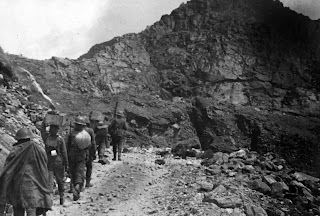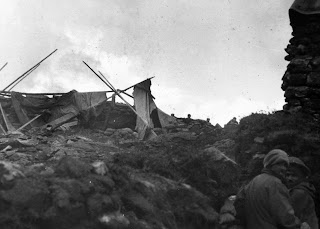
On Saturday, India observed the 50th anniversary of its comprehensive military defeat in the brief border war with China in the winter of 1962. It is important to look back at the events leading to the skirmish before attempting to assess what the future holds for the relationship between the two Asia giants.
In a way, the origins of the border war can be traced to two unrelated events in 1959. In March that year, Tibetan temporal and spiritual leader Dalai Lama fled to India through Arunachal Pradesh (then known as North-East Frontier Agency or NEFA) following a Chinese crackdown in Tibet. New Delhi's decision to grant the Dalai Lama political asylum did not go down well with China although Beijing did not make its annoyance too obvious.
The second event was India's discovery of a road, connecting China's mainland to the restive Sinkiang, built by China through the Indian held but unmanned Aksai Chin area in Ladakh. That discovery triggered the ill-thought 'Forward Policy', initiated by India's first Prime Minister Jawaharlal Nehru in consultation with his cousin Lt. Gen BM Kaul, a non-combat officer.

Under that policy the army was ordered to establish posts with less than dozen soldiers in areas that were neither connected by road nor had any strategic value just to show that the land belonged to India. The establishment of these 300-odd 'penny packets', as one general later described them, led China to believe that India was preparing for a showdown over the border. Nehru, under pressure from the opposition and the people, was goaded into ordering a reckless plan to 'evict' the Chinese from Aksai Chin and NEFA against the professional advice of his military brass.
The so-called Indian provocation apart, Mao Zedong by some accounts also wanted to teach India a lesson since India and China were both competing for leadership position in Asia of the time. Mao seized the opportunity by coinciding the attack with the Cuban missile crisis. Col (ret'd) Anil Athale, who co-authored the official history of the 1962 war for India's Ministry of Defence says Mao used the tension between the US and the USSR to launch the offensive against India.
'The Chinese were aware of the impending Cuban missile deployment and calculated that the US would be engaged in a major confrontation with the erstwhile USSR to come to India's aid. The Chinese methodically built up its supplies and troops in Tibet to wait for the onset of the Cuban missile crisis. That opportunity came on 20 October when the US decided to confront the USSR on Cuba,' Athale told me.
Fifty years after that bloody confrontation in which India lost over 4,000 soldiers, much has changed on the ground. Indian deployment all along the line of actual control, as the de facto boundary is called, is sufficiently strong although border infrastructure on the Indian side is still below par.

A repeat of 1962 is unlikely but tension between the two countries over the unresolved border issue continues to simmer despite rising bilateral trade ($US73 billion last year).
The intense India-China geopolitical rivalry is playing out in both South and South East Asia. China is making big inroads into India's neighbourhood by increasing its presence in countries like Sri Lanka, Bangladesh, Nepal and Myanmar. Beijing's long-standing relationship with Pakistan continues to be a constant threat to India; the increasing Chinese footprints in the Gilgit-Baltistan province of Pakistan, abutting Ladakh, worries India no end.
The rivalry, in a way, also extends to South East Asia as New Delhi gets sucked into the South China Sea and East China Sea disputes Beijing is involved in. China is wary of India's rising defence and economic ties with Vietnam, Thailand, Indonesia, Japan and Australia. But the biggest irritant between New Delhi and Beijing in coming years will be in the form of growing bilateral ties between the United States and India. Strategists in Beijing think Washington is cosying up to New Delhi to balance China's preeminent position in Asia.
As India looks back at the 1962 border war, its leadership will do well to realise that an increasingly assertive power like China will strive to keep India 'off-balance' by what can rightly be described as 'creeping tactical belligerence' on all fronts even while it seeks to develop economic and cultural ties with New Delhi.
In the final analysis, New Delhi must learn to look after its own national interests even as it attempts to deal with its increasingly powerful China.




























































ALL PHOTOS: COURTESY: DRP, GOVT OF INDIA
No comments:
Post a Comment